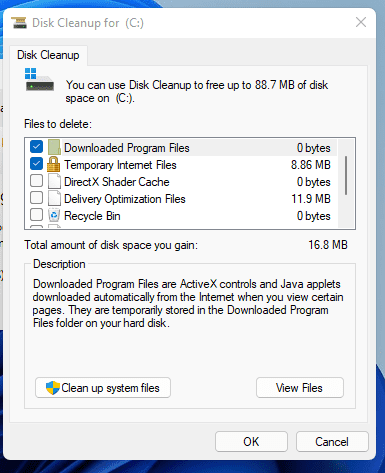Have you ever asked yourself; “How much space does Windows 10 take up?” It is very important to know the space Windows 10 occupies so you will know how much disk space to reserve for the operating system.
In an earlier article, I wrote about How big Windows 10 is and why it is that big. Here is yet another interesting article about the Windows 10 operating system.
Use the Table of Content below to navigate the content of the page.
How much space does a Windows 10 take up?
A standard Windows 10 32-bit operating system will occupy approximately 16GB of storage space and the 64-Bit version will occupy approximately 20GB of storage space. However, you might need extra storage space to install additional apps so it is highly recommended to install Windows 10 on at least 32GB of storage. This will help if you want to install a couple of browsers and a few text editors. But if you are looking forward to installing highly graphics-oriented software, then you should install your windows with at least 50GB of excess space for your application software. The extra space will be occupied by additional apps or software you might need later.
You should also know that when new updates for Windows 10 are released, you will need more storage space to be able to download and install the updates. That is why you must install your Windows 10 operating system on the largest disk space possible.
If you want to install your own Windows OS, look no further. Eduhintz has an awesome article on how to install Windows that you can read to learn about the installation process.
The reason why the OS occupies much space.
The standard Windows 10 iso image is approximately 3.9GB for 32-bit and 5.5GB for the 64-bit version. But what you must know is that the iso is a compressed file. All the files and folders that the operating system needs to run are consolidated and compressed into a single iso image file.
During the installation process of a new operating system, the files and folders are decompressed and copied from the installation medium to the local drive. It is the same reason why the installation process of a new Windows takes so much time.
There are instances when you might get disk full notice quicker than expected. Do not panic. Follow the procedure below to clean up your disk and free up some space.
How to clean your disk space on any Windows OS
There are many reasons why you might want to free some space on your local disk. There are also many unwanted files and folders that might be occupying space on your disk.
In this section of the article, I will give you a simple procedure that will help you clean up your disk space without using any third-party software.
- Click on the search bar on the taskbar or from the Start Menu
- Search the keyword “Disk Cleanup”
- Click on the app to open the Disk Cleanup app. You should see a dashboard similar to the one in the image below.

- Select the temporary files that might be occupying space and the recycle bin if there are files in it and click Cleanup to clean the files.

Use the “More Options” to view unused programs and remove them. There are also older versions of Windows left on your computer after every update. You can clean these unwanted copies of Windows as well.
This step will help you free more space on your computer storage. Anytime you get the “Disk Full” notification, simply follow the above steps to free up some space.
